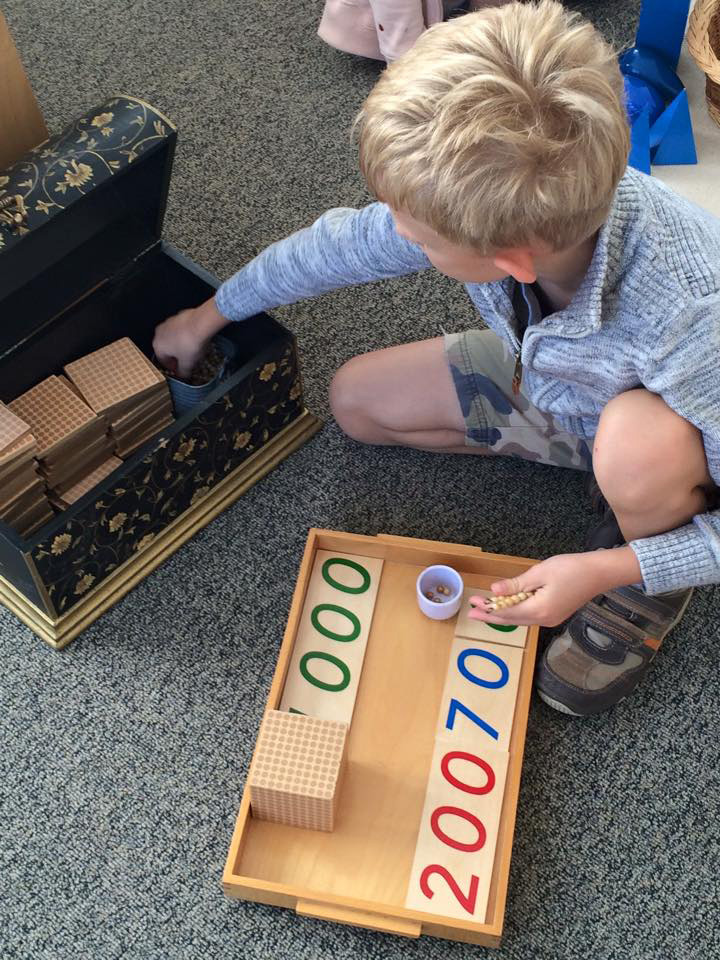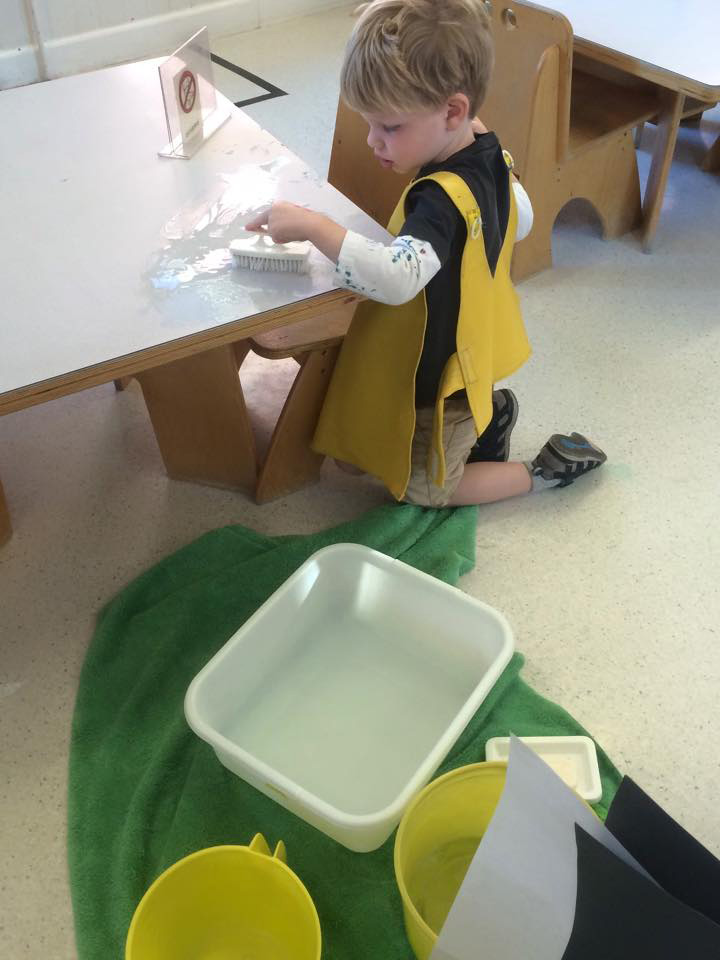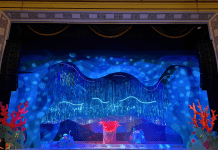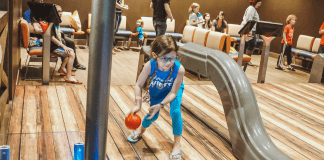A special Thank You to the Montessori Center Room for providing the content for this post.
So what exactly is Montessori education? The quick answer is that Montessori education is an educational philosophy developed by Maria Montessori who was an Italian doctor. Montessori started her first school in Italy in 1907, called the Casa dei Bambini (Children’s House).
What would you see if you visited a Montessori preschool/kindergarten school?
• Light, uncluttered walls with any artwork/pictures hung at the children’s eye level.
• Child sized tables for one or two children each
• Child sized shelving with beautifully arranged ‘work’ for the children to choose.
• Children would be working at a table or on a rug they had rolled out on the floor.
• Children representing a three year age span together in the same Classroom/Environment
• Classroom pets, live plants, natural light
At first glance, it may be difficult to spot the teachers – the adults in the room try to remain low and unobtrusive, often sitting on the floor to give lessons and to observe the children. The Montessori classroom is multi-aged, representing a three year cycle. So the classrooms here at Montessori Center Room have children ages three years through six years. That multi-age grouping is important as the younger children learn so much from their older peers! And how special when an older child can show his younger peer something new or help him with the task at hand. Completing the three year cycle is very important for children attending a Montessori school.

The Montessori classroom or environment has no timed daily schedule to follow – the goal being to provide the children with as long of an uninterrupted work cycle as possible. The children are able to stay with their ‘work’ as long as is needed and as long as their work is purposeful, free from interruption. The children are able and expected to choose one ‘work’ after another but must always put their work back just as they found it before moving on to something new. With a few exceptions, there is only one of each work on the shelves. The children learn to wait their turn and to be patient, respecting the work of their peers. Grace and courtesy are modeled and expected.
I like the “plus” works the best. And I like how works help me get smart and learn stuff. Oh, and they are fun! I also like seeing my friends and sometimes doing works with them. – Nora (Age 6, in Kindergarten and her third year in a local Montessori program.)
So how do the teachers keep track of all of those children doing different things at different times? Observation is key! The teachers are constantly observing the children, noticing where the child is naturally drawn, what the child may not be inclined to work with and taking notes on the children every day. Each classroom staff can come up with their own way of utilizing those observation notes. And it is the teacher’s job to make sure each child is naturally moving through the curriculum in each subject area (math, language, sensorial, practical life, art, geography, science)
Montessori teachers have received Montessori training, learning the philosophy and use of the materials that Maria Montessori designed when she worked with children. Those same materials (plus more) are still used in Montessori classrooms today.
The Montessori classroom approach has been even more amazing than we expected when we initially considered it for our children. As a mother, I love the emphasis on the whole child. I love that there is conscious teaching of grace and courtesy as well as responsibility and ownership on behalf of my children in their own learning. – Sarah (Mother of two children currently enrolled in a Montessori Preschool and Kindergarten curriculum.)
 Montessori classrooms can be found around the globe, not just in Cincinnati. It is interesting to note, however, that Cincinnati is the home of the first public Montessori school in the U.S. and the first public Montessori high school in the U.S. Montessori schools can be private or public. Some are affiliated with a church and many are not. Just like any school, a Montessori school’s student population will reflect the surrounding neighborhoods. The cost of Montessori schools varies, based on whether it is public or private. Here at MCR, the Board makes every effort to offer a competitively priced program.
Montessori classrooms can be found around the globe, not just in Cincinnati. It is interesting to note, however, that Cincinnati is the home of the first public Montessori school in the U.S. and the first public Montessori high school in the U.S. Montessori schools can be private or public. Some are affiliated with a church and many are not. Just like any school, a Montessori school’s student population will reflect the surrounding neighborhoods. The cost of Montessori schools varies, based on whether it is public or private. Here at MCR, the Board makes every effort to offer a competitively priced program.
Montessori Center Room is a private, parent-owned, non-profit and non-chartered school for children ages three to six years. The school was founded in 1966 to provide young children with a quality Montessori learning experience while promoting intellectual, physical, and social/emotional growth. The school’s founder, Jeannine Schmid, worked tirelessly to enroll children from all socio-economic backgrounds. MCR carries on that mission today, offering tuition assistance to any family who demonstrates financial need. Some families pay full tuition, others pay a percentage of the full tuition based on their tuition assistance application.
Being parent-owned, MCR depends on an active parent community. Parents are asked to plug into one of four parent committees (Events & Communication, Environments, Fundraising, and Classroom). Our parents’ support and love of our program are contagious!
Feel free to call (513) 321-3282 and schedule a visit – our Observation Booths are a special bonus as they allow you to see into and hear into the Classrooms while they’re in action. We’d love to show you around!














after my experience I advise all to stay away from this place.
We are sorry to hear you had such a bad experience, ours has been very different. Every parent needs to make the best and most informed decision they can for their child. We encourage parents to take advantage of the open house scheduled for November 15th from 12p-2p to ask any questions they might have to help them make the best decision for them and their family.